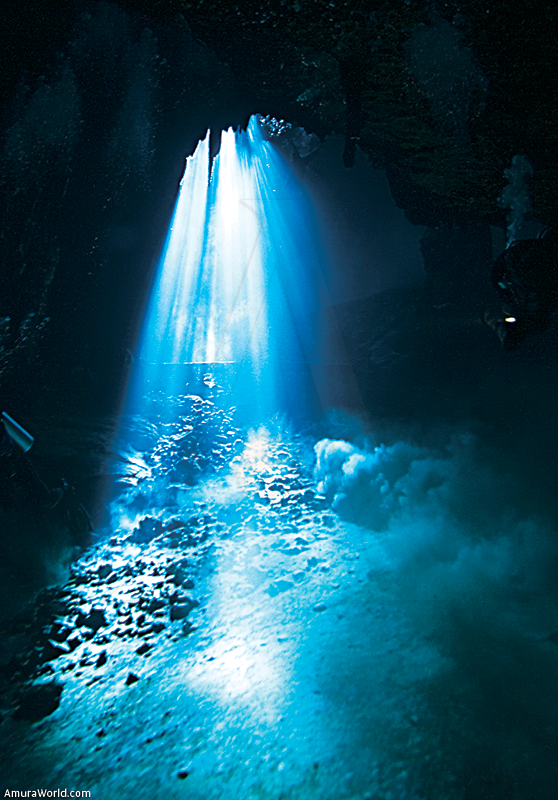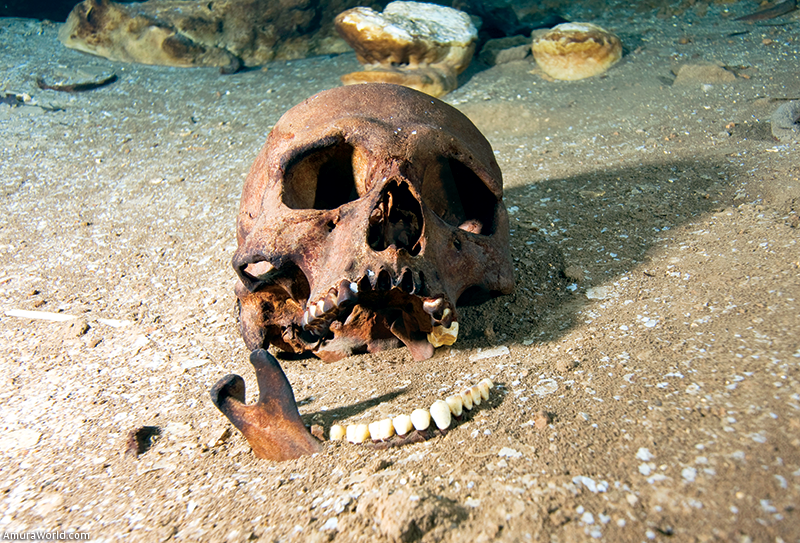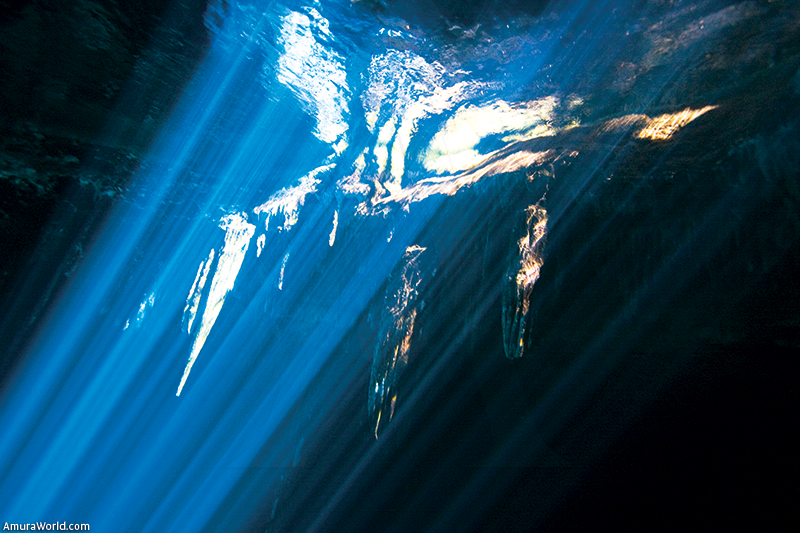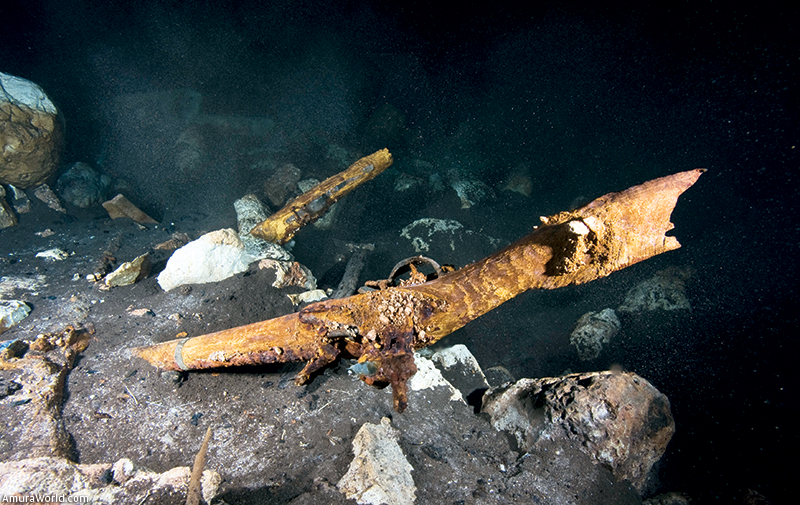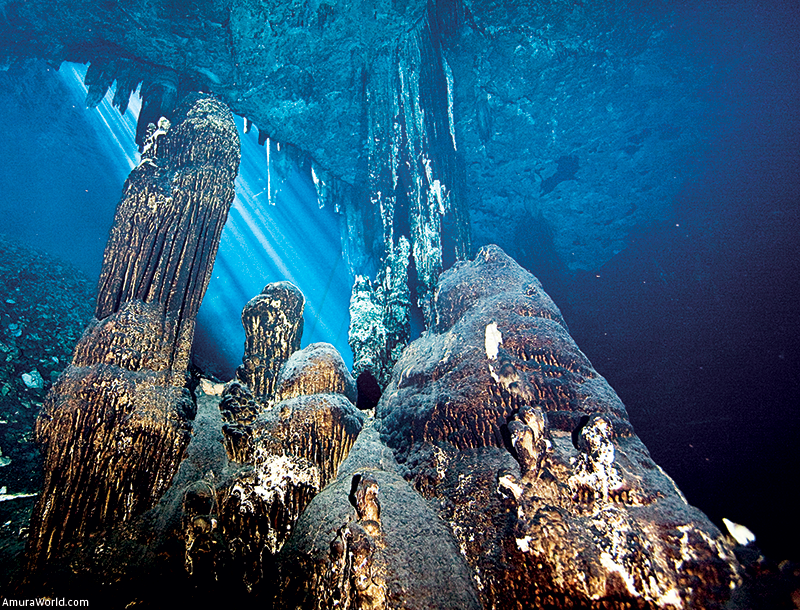Diving in a legendary world
Sunlight rays illuminating the water, its deep clarity and the ecosystem formations in the cenotes, turn this kind of diving into a unique experience.
The word “cenote” comes from the Mayan “dzonot”: which means “sacred place” in which Maya people used to ritualize offerings to Chaac (the rain god). Etymologically, the word cenote, is used to designate a natural hole in limestone terrain, and it also means “cave with Water”, a clear reference to the Mayan use as sacred places for sacrifice as a part of their complex cosmology.
It is a known legend that Maya people used to sacrifice young virgins dressed in jewels and fine clothes by throwing them into the deepness of the cenote waters. Experts recently established, after a process of analysis of the bones found by archaeologists and divers at the bottom of the cenote, that those human remains actually came from children younger than 11 years old and from male adults.
The Yucatan Peninsula is formed by a subsoil of limestone, a highly permeable material. The damaging effect of erosion has caused the roof of some of these caves to collapse, exposing a small freshwater lake. In its further evolution, the cenote gets filled with its own ceiling debris, decreasing its depth, eventually drying, and finally being reduced to a mass of vegetation. While it is not flooded, the water is filtered, forming stalactites and stalagmites that grow both in the ceiling and in the floor. These limestone columns can reach up to seven or eight feet long.
Yucatan has more than 3,000 cenotes, but unlike the Riviera Maya, they are not connected by underground rivers. This set is called “Ring of Cenotes” all of which were formed by a meteorite that struck the earth 65 million years ago, striking also believed to have caused the extinction of the dinosaurs.
The cenotes are classified as the following:
- Open-Skies Cenote.
- Semi-Opened Cenote.
- Underground Cenote or Cave Cenote.
This classification is organized according to the age of the cenote. A mature cenote is the one which is completely open at its roof, and the cenote which still retains its whole dome is considered the youngest.
Really close to the city of Merida, only 15 km (9.3 miles) away, lies the archaeological zone of Dzibilchaltún, “the place with stones’ writing “, whose first buildings date back to 500 BC. The area covers about 16 km (9.92 miles), with monumental works such as the Templo de las siete muñecas (Temple of the Seven Dolls), the Plaza central and a colonial building, built between 1590 and 1600 and located in the middle of the square: the Capilla Abierta (the open chapel). On one side is the Xlacah cenote, which means “old town cenote”.:in 1958 an expedition of divers from National Geographic Society went into its depths and rescued 30 000 Mayan artifacts, most of them ritual.
- CHELENTÚN, CHANSINIC’CHE and BOLONCHOJOL in the town of Cuzama, you can visit three cenotes, of Chelentun “ Lying Stone”, of Chansinic’che “Tree of Ants” and the Bolonchojol “Nine Leaks” one. Each of these has its own charm and all of them are available for swimming, diving, snorkeling and cave diving.
- LUKUNCHÁN (Young Cenote), X-AZUL (Blue Girl), MUMUNDZONOT (Small Mudflat) and SAC-NICTÉ (White Flower): very close to the Cenotillo and Tunkas villages, these cenotes owe their names to the large number of cenotes in their surroundings, perhaps a 150, but the main ones are Kaipech, Xayin and Ucil.
- IK KIL, CHICHÉN ITZÁ: the most famous archaeological site and the best preserved one out of all the sites in the Peninsula. This site is the “Sacred Cenote”. The echo archaeological park houses the cenote Ik Kil and the “Sacred Cenote Azul” which is spectacular, with 26m (28.44yd.) depth and surrounded by lush vegetation, and crystal clear waters, ideal for diving.
- KEKEN or DZITNUP lies within an underground chamber, where huge formations of stalactites and stalagmites can be seen. There is a hole in the roof through which light penetrates and illuminates the turquoise waters. It is found 7km (4.34miles) southwest of Valladolid
- ZACÍ: at the heart of Valladolid, city founded in 1543, in the area which once was the pre-Hispanic site ZACÍ, which means “White Hawk.” The most impressive aspect of the cenote is its dome, from which enormous stalactites hang, and through which sunlight filters, illuminating the lush vegetation surrounding the turquoise water tank, home to species of catfish and an eyeless black catfish called “Lub”.
The weak water flow and its temperature, oscillate between 24 ° C (75.2° F) and 25 ° C (77° F) make these holes spectacular.
The cenotes are gateways to a legendary underwater reality. The incredible views, which will guide the diver to a dream world, the wonderful geological formations, stalactites, stalagmites, waterfalls and stone columns, make this an underwater universe where anyone can enjoy an unforgettable experience.
The cenotes and cave diving sport is practiced in closed or semi-open environements, so there are special rules that must be followed at all times:
- Diving within the limits of natural sunlight.
- Maximum Distance of 65m (71.11yd.) to the surface.
- Maximum depth of 33m (36.1yd.).
- Diving without restriction (defined as a passage where two divers can not pass alongside through the same cavespace)
- Plan for diving without decompression.
- Minimum visibility: 10m (10.94yd.)
- Minimum air pressure of 135 bars / 2000 pounds.
- Straight line swim to the surface.
- Maximum 4 people per each diving guide
For diving enthusiasts who want to experience new sensations, diving in cenotes is the greatest opportunity to discover the unique natural beauty that Yucatan State offers to the world.
Text: AMURA ± Photo: AMURA

